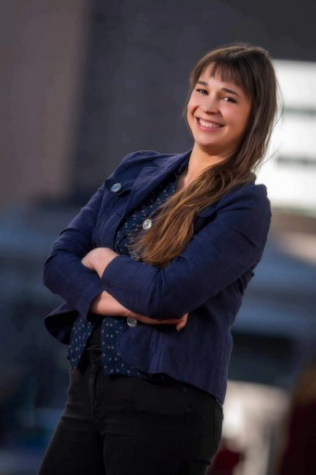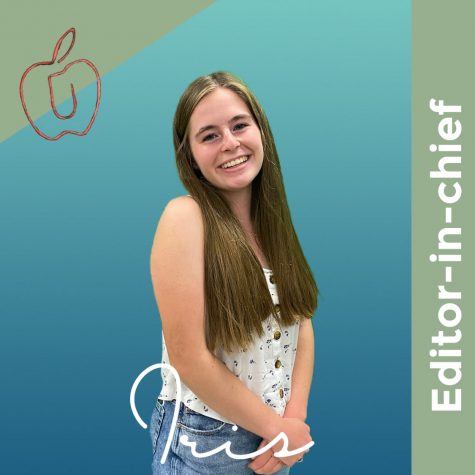Drawing the Lines
The Vice-Chair of the Colorado Independent Congressional Redistricting Commission Illuminates the Details of the State’s Redistricting Process

This map shows the latest staff plan for Colorado’s congressional districts.
September 16, 2021
The U.S. Census
A lot can change over the course of a decade. Hairstyles, presidents, climate… And, without a doubt, states’ congressional maps, which are monumentally significant in the election of U.S. representatives. Those elected officials who serve in the House of Representatives are largely responsible for passing (or not passing) consequential legislation surrounding relevant issues like infrastructure, public health, voting rights, the environment, and more.
Every ten years, as the U.S. Census collects new data about the country’s population, congressional districts are adjusted to properly reflect new trends in communities around the nation.
For example, if a state sees a significant growth in residency—which is indicated by the results of the census—they may gain an additional congressperson in the House, and therefore, an additional district on their state’s congressional map. In fact, Colorado gained a congressional seat thanks to the 2020 Census data. This adjustment is imperative in putting the “representative” in “representative democracy,” for if a state has a greater population, it must have a greater number of representatives to account for the voices of the state’s entire population.
Ten years pass, another census takes place, and population data determines how many congressional districts a state is allowed, so what’s next?
Redistricting
This is where the important process known as redistricting comes into play. It occurs when a state redraws the lines around its congressional and state legislative districts. People living inside the perimeter of a district’s lines are the ones who get to vote for that district’s representative.
This redistricting process impacts every state (and every person) in the nation, though it is carried out differently from state to state.
Colorado’s Unique Redistricting Process

Commissioner Jolie Brawner, the Vice-Chair of the Colorado Independent Congressional Redistricting Commission, isn’t just familiar with Colorado’s relatively-unique redistricting procedure; she’s a significant part of it.
So what exactly is the Colorado Independent Congressional Redistricting Commission (besides a string of massive words)?
Essentially, it is a commission made up of four Democrats, four Republicans, and four unaffiliated people who lead the congressional redistricting process in Colorado. Commissioner Brawner said that none of the twelve commissioners hold elected office, and most of the time, they even work other day jobs in addition to their commissioner roles. In other words, they aren’t politicians.
The non-governmental, independent setup of this committee is significant because “historically these maps have been drawn by legislatures and courts, so you’ve [had] partisan elected officials and judges” drawing the lines, Commissioner Brawner said. Therefore, “The process has always seemed kind of clandestine [secretive]; you don’t know what’s happening, there are legislatures meeting in closed sessions, and then all of a sudden they’re like here’s a map.” That combination of partisanship and secrecy often leads to gerrymandering (follow the link for a short but surprising video), a ploy that politicians will use to manipulate the maps in favor of their political party.
But Colorado made a move to avoid those partisan redistricting tactics in 2018 when its voters passed Amendments Y and Z to the state constitution. Y and Z, which passed with a rate of over 70%—indicating bipartisan voter support—shifted the responsibility of redistricting from elected officials to independent commissions. And since this is the first redistricting period since the amendments’ passage, “It’s the first time ever that you have non-politicians, regular people who applied and wanted to do this work, working together to make these maps,” Commissioner Brawner said. Less than ten other states in the U.S. have established independent redistricting commissions.
“We’re involving the people, we’re talking to people, we’re speaking to organizations.”
Going hand-in-hand with their goal to avoid secrecy, Colorado’s Independent Congressional Redistricting Commission is working to promote “engagement,” “transparency,” and “accessibility.”
To exemplify all three pieces, the commission has focused on giving every Coloradan the chance to be a meaningful part of the process. Commissioner Brawner said, “All of [the commission’s] meetings are open to the public,” a characteristic that gives people a transparent look into the process instead of shutting them out.
In addition, the Independent Congressional Redistricting Commission holds a multitude of public hearings during which Coloradans across the state can testify and advocate for their needs as they relate to the maps.
Commissioner Brawner said, “We’re involving the people, we’re talking to people, we’re speaking to organizations.”
And the commission is working to involve and talk to all people. Commissioner Brawner said that, sometimes, members of rural communities are expected to make the commute to Denver to make their voices heard in situations like this. But with these public hearings, commissioners are traveling to them.
In order to meet Coloradans in their communities, to make them feel welcomed and comfortable, the commissioners “were very mindful about focusing more on third spaces to have these meetings and not having them in courthouses and police stations and federal buildings.” While those locations have a very important role, Commissioner Brawner said, they may not feel as welcoming. So, as an alternative, many public hearings were held in common community spaces, like local high schools, for example.
“We’ve tried to be as inclusive and as welcoming as possible because we want to hear those voices that traditionally may feel less comfortable testifying.”
On top of these in-person hearings, people have virtual testifying options via platforms like Zoom, which they can use from the comfort of their own homes if a public setting isn’t one that necessarily works for them.
To make remote testimony a viable and accessible path for everyone, Commissioner Brawner said, “We are setting up remote sites around the state in case people have technology challenges.”
Throughout the course of the more than 30 public hearings conducted, Commissioner Brawner said, “We’ve had people as young as 16, 17 coming out to tell us how they feel about their community, and we’ve also had people coming out who have lived on their small ranch for generations.” The commissioners are hearing both perspectives, “and it’s great.” Commissioner Brawner “love[s] how excited people are about being part of the process.”
Broomfield and Redistricting
Even the community here in Broomfield is a significant part of the conversation: “You guys are right in a really exciting area of transition where that new congressional district is going to be coming in right by you,” Commissioner Brawner said.

Because Broomfield is in a “growth area,” it is an area that the commission is “talking about in length,” as they are trying to figure out: “Where does Broomfield go?”
Every resident of Broomfield—and every student at Broomfield High School—can engage and interact with these intricate questions and processes. One way to do so is by exploring the interactive map for the second-staff-plan congressional map (which was just released this week). Another way is to simply apply for jobs and roles surrounding similar processes. Commissioner Brawner said, “These spaces need your voice, these spaces need people to put themselves forward and be here.”
“We’re trying to elevate some voices that maybe haven’t been part of the process before.”
So, “apply for it, go for it,” she said. And if in the process “you go through a glass ceiling, leave the ladder up for the people behind you.”





